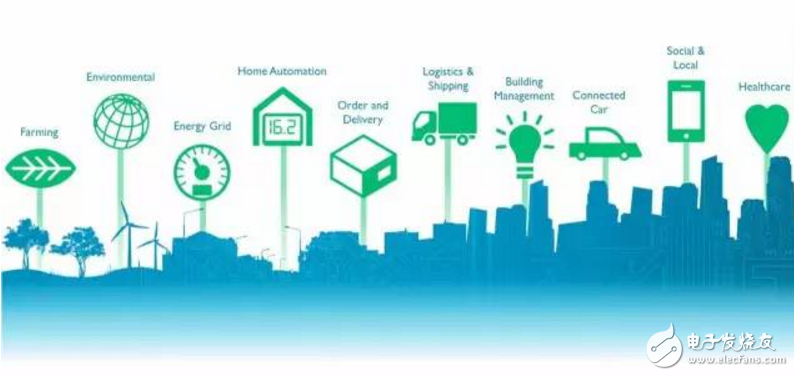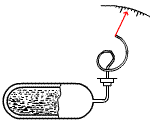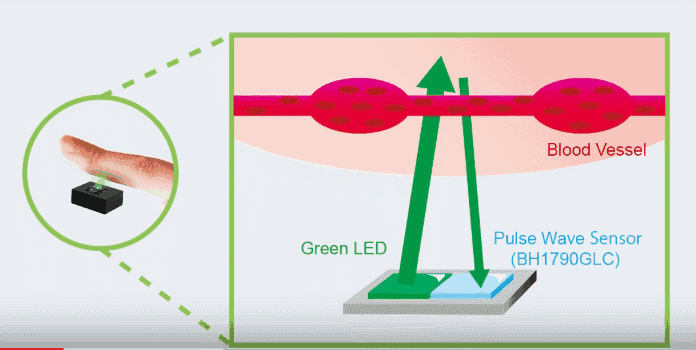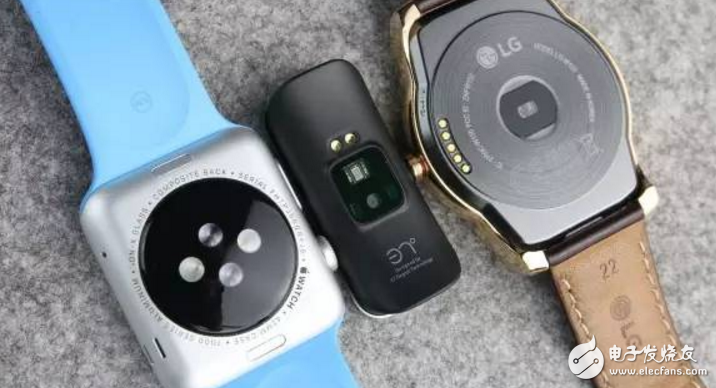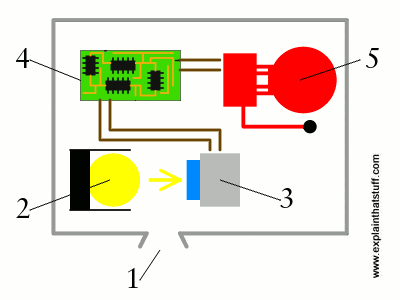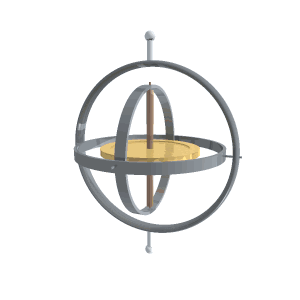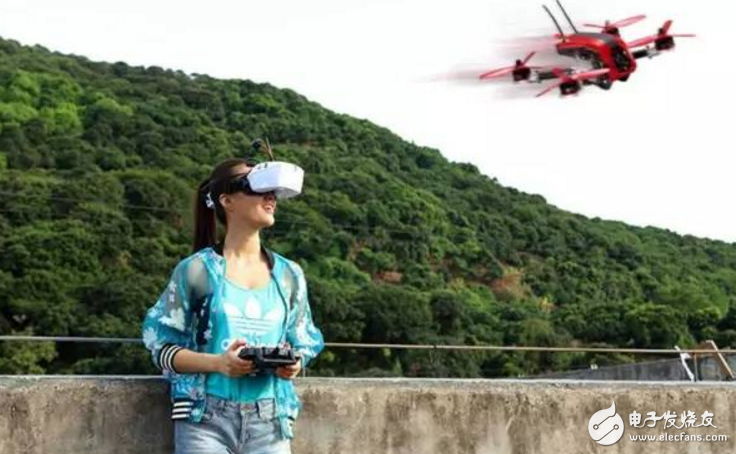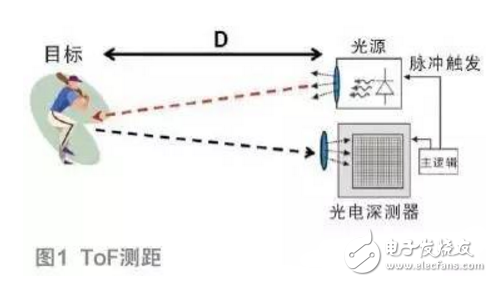------ [Guidance] ------ The real world is a world of analog signals. People perceive the world through sight and touch. In the era of the Internet of Things, the sensor shoulders the mission of “five features†and perceives everything. It can be said that the current sensor development is in a state of full bloom in many fields. There are so many subdivided products, and it is not easy to list them all. Today, we talk about six sensors commonly used in the consumer field. Temperature sensors are used in a wide range and in many quantities, ranking first among various sensors. The development of temperature sensors has gone through three stages: traditional discrete, analog integration and new intelligent temperature sensors. The new temperature sensor is developing in the direction of intelligence and networking. The temperature sensor can be divided into two categories according to the contact mode between the sensor and the measured medium: one is a contact temperature sensor, and the other is a non-contact temperature sensor. Traditional thermometer principle The temperature measuring element of the contact temperature sensor has good thermal contact with the object to be measured, and the heat balance is achieved by the principle of heat conduction and convection. The indication value at this time is the temperature of the object to be measured. This temperature measurement method has high precision and can measure the temperature distribution inside the object. However, this method will produce a large error for objects that are moving, have a small heat capacity, and have a corrosive effect on the temperature sensing element. The temperature measuring element of the non-contact temperature measurement does not contact the object to be measured. Commonly used is the principle of radiant heat exchange. The main features of this type of temperature measurement method are small targets that can measure motion state and objects with small heat capacity or rapid changes, and temperature distributions of temperature fields, but are greatly affected by the environment. Old apple retrofit temperature sensor Temperature sensors are required wherever temperature monitoring is required and certain requirements are met. In the consumer sector, temperature sensors are often used to detect changes in room temperature. It senses the temperature and converts it into an available output signal. When the temperature is high, the air conditioner starts to cool, and when the temperature is low, the air conditioner starts to heat. Good friend: In the actual use process, the humidity sensor is often used in the place where the temperature sensor is used. It is very inconvenient and very convenient to install two at the same time, so the two are often integrated to form a temperature and humidity sensor. The pulse sensor refers to a machine for detecting similar heart rate. The common types are mainly photoelectric, and there are two types of discrete and integrated. The emitting part uses visible light and infrared light. Commonly used pulse sensors mainly use the principle of sensitivity of specific wavelengths of infrared light to blood changes. Due to the periodic beating of the heart, the blood in the blood vessel is regularly changed in flow velocity and volume, and the current number of heartbeats is calculated through signal noise reduction and amplification processing. It is worth mentioning that, depending on the skin color of different people, the infrared rays emitted by the same heart rate sensor are different from the skin and the skin reflection, which causes a certain error in the measurement results. In general, the deeper the skin color of an individual, the more difficult it is for infrared rays to be reflected back from the blood vessels, and thus the greater the influence on measurement errors. Therefore, the heart rate measured by most wristbands and watches is basically not completely accurate, but it can basically reflect the trend of heart rate changes, which is enough for ordinary people's exercise heart rate monitoring. Pulse sensors are primarily used in a variety of wearable devices and smart medical devices. A typical application is iWatch. The smoke sensor realizes fire prevention by monitoring the concentration of smoke. It is a technologically advanced, stable and reliable sensor that has been maturely applied to various fire alarm systems. Smoke sensors are commonly used in chemical detection and optical detection depending on the principle of detection. The former utilizes the radioactive cesium 241 element, and the positive and negative ions generated in the ionized state are directionalally moved by the electric field to generate a stable voltage and current. Once smoke enters the sensor, it affects the normal movement of positive and negative ions, causing corresponding changes in voltage and current. The calculation can determine the strength of smoke. The latter passes through a photosensitive material, which normally emits light completely on the photosensitive material, producing a stable voltage and current. Once smoke enters the sensor, it will affect the normal illumination of the light, resulting in fluctuating voltage and current. The calculation can also determine the strength of the smoke. Photoelectric smoke sensor principle Smoke sensors are widely used in fire alarms and safety detection. Mainly used in conjunction with the weak current control system, it is also the best equipped product for smart home and security host. For example, the smoke sensor launched by Xiaomi is a single item. For angular velocity sensors, many people may be unfamiliar, but if you mention another name, the gyroscope, I believe many people know. The gyroscope is a device used to sense and maintain the direction, based on the theory of angular momentum immortality. Once the gyroscope begins to rotate, the gyroscope has a tendency to resist the change of direction due to the angular momentum of the wheel. Principle of the angular velocity sensor In a common sense, the direction of the axis of rotation of a rotating object does not change when it is not affected by external forces. If you play the gyro, you will know that when the rotating gyro encounters an external force, the direction of its axis will not change with the direction of the external force. We also use this principle to ride a bicycle. The faster the wheels turn, the less likely they are to fall because the axle has a level of strength. Three-axis gyroscope dynamic display According to this principle, people use it to maintain the direction, the thing that is manufactured is called the gyroscope, and then the direction indicated by the axis is read in various ways, and the data signal is automatically transmitted to the control system. A single-axis angular velocity sensor can only measure changes in a single direction, so a typical system requires three single-axis angular velocity sensors to measure changes in the three directions of the X, Y, and Z axes. At present, a general 3-axis angular velocity sensor can replace three single-axis, and it has many advantages such as small size, light weight, simple structure, and good reliability. Therefore, various forms of 3-axis angular velocity sensors are currently the main development. trend. The most common angular velocity sensor usage scenario is a mobile phone. For example, a racing mobile game is an interactive mode in which the car is swayed by the action of an angular velocity sensor. In addition to mobile phones, angular velocity sensors are also widely used in AR/VR and drone applications. If the temperature and humidity are a good friend, then the angular velocity and acceleration are siblings. There are two types of accelerometers: one is an angular acceleration sensor, which is improved by a gyroscope (angular velocity sensor). The other is a linear acceleration sensor. In the case of relatively low requirements, a gyroscope-based sensor can measure both the tilt angle and the acceleration. Distance sensors have a variety of structural principles, and even the same distance sensors have many different configurations and principles. A commonly used measurement method is called the time-of-flight method. Principle of flying time By transmitting and measuring the time from the launch of a particular energy beam to being reflected back by the object, and by this time interval the distance to the object is estimated. This particular energy beam can be ultrasound, laser, infrared, radar, and the like. This sensor has a high measurement accuracy and can accurately measure distance. Since the launch of the sensor, it has been popularized in various applications in society, from anti-theft security products to industrial level level detection, automobile anti-tailing warning, foggy collision avoidance, airport aerial bird detection and drive, intelligent control and so on. Applying infrared distance sensor technology to surveillance cameras, you can implement various detection functions, such as intrusion detection. Through video analysis, you can also implement countless other applications, such as illegal parking, mobile patrol objects, fence climbing, traffic, and mistakes. The direction and so on. A barometric pressure sensor is a component that measures absolute atmospheric pressure, primarily by converting the sensitive component's atmospheric pressure to the amount of electricity that can be processed by the circuit. The atmosphere is like a "quilt" wrapped around the surface of the earth. Atmospheric pressure is generated by the gravity of the air. At different altitudes, the atmospheric pressure changes. In addition to directly measuring the pressure of the air pressure sensor, another function is to measure the altitude indirectly. The main sensing element of the air compressor's air pressure sensor is a film that is sensitive to the strength of the air pressure sensor and a ejector pin. The circuit is connected to a flexible resistor. When the pressure of the gas to be measured is lowered or increased, the deformation of the film drives the thimble, and the resistance of the resistor will change. The resistance of the resistor changes. A signal voltage of 0-5V is taken from the sensing element, accepted by the data collector via A/D conversion, and then the data collector transmits the result to the computer in an appropriate form. Diffused silicon pressure sensor The main component of many air pressure sensors is the variable capacity silicon capsule. When the external atmospheric pressure of the varactor film box changes, the thimble acts, and the single crystal silicon capsule undergoes elastic deformation, thereby causing a change in the capacitance of the parallel diaphragm capacitor of the silicon bellows to control the air pressure sensor. In terms of applications, air pressure sensors enable drones, smartphones, wearables, and other mobile devices to accurately identify altitude changes, whether indoors or outdoors. In addition, some high-altitude algorithms are integrated inside the air pressure sensor for height calculation. The most typical application is in 3D GPS navigation. Now many cities have elevated, then you are on the elevated or elevated, the accuracy of the pressure sensor within 30cm is easy to solve this problem. Conclusion As mentioned at the beginning, there are many other sensors mentioned above. Although their working principles are different, the most basic principles are mentioned above, that is, the principle of light, sound, chemistry, etc. is used to convert the measurement to electrical quantity, but most of them are based on specific fields in general principles. Based on the upgrade and extension. Since the invention of the industrial era, sensors have played a vital role in areas such as production control and probing. Driven by the Internet of Things, the sensor is welcoming its third spring. Dc Axial Fan ,12V Axial Fan,Dc Axial Fan 12V,Dc Axial Fan 24V Hangzhou Jinjiu Electric Appliance Co Ltd. , https://www.jinjiufanmotor.com